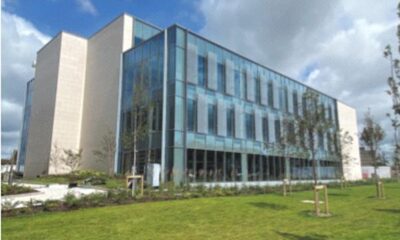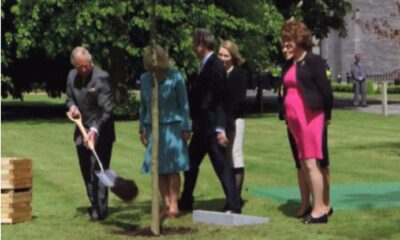CITY TRIBUNE
Nuns’ Island homes will be for ‘mature’ post-graduates
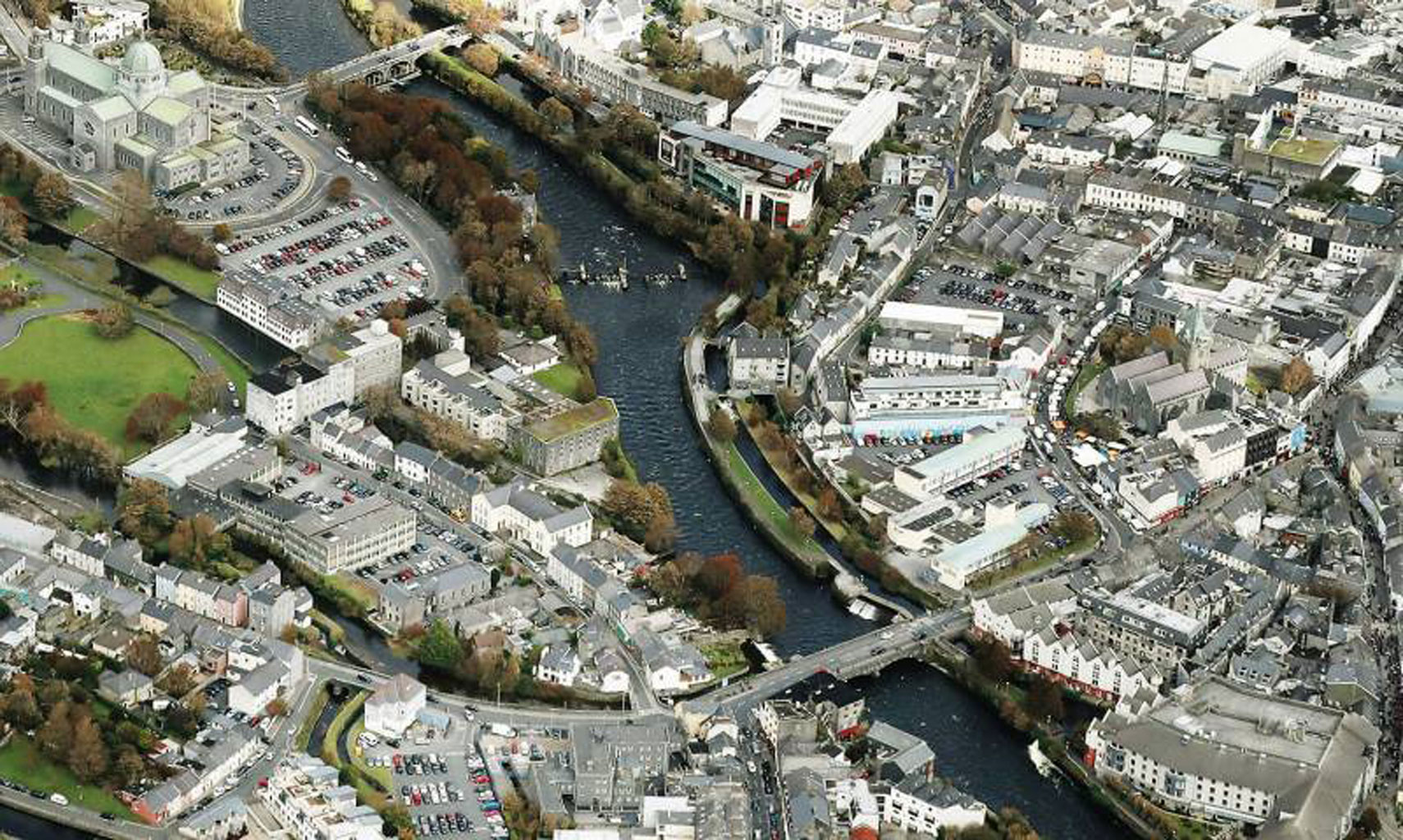
Student accommodation included in a masterplan for the future of Nuns’ Island – which has already raised concerns among local residents – would probably be aimed at mature post graduates, some of them with families.
Galway City councillors were told last week that the vision document for the 15-acre community is in its early stages, and its drivers (NUI Galway, in consultation with the City Council) are merely in a ‘listening mode’.
Assistant Director at the university’s Buildings and Estates section, Brian Saunders, told councillors that everything put forward in the plan was just a proposal at this stage and that local residents and stakeholders were being consulted on all aspects.
The masterplan, which was first mooted in 2017, was been presented to the public at a two-day event in the college’s O’Donoghue Theatre last month, and previously at another public function in the Portershed.
Mr Saunders told this week’s Council meeting that two meetings, – one attended by 60 people – had already been held with local residents, as well as other meetings with the local fisheries interests, the arts and culture communities, the Galway Diocese, the Poor Clares, St Joseph’s School (the Bish), as well as owners of other properties in the vicinity.
The university owns seven buildings in the area, as well as Fisheries Field, the site of the Galway International Arts Festival’s Big Top (which Mr Saunders assured would be facilitated) while the Council owns the Nun’s Island Arts Centre, formerly a church.
The masterplan would see the education interests of the college as well as a possible cultural hub, public parks and possibly even a boutique hotel, being realised.
Mr Saunders stressed that the education aspects would concentrate on fourth level such as start-up enterprises involving post-graduates, many of them with young families and that it would be they who would be accommodated in any future residences.
That building is currently earmarked on the site of the Bish, which has its own plans to move to Dangan.
Despite opinions from some councillors that there is enough student accommodation in the city, Mr Saunders told them that there was in fact a deficit of 2,000 beds for third level students.
“It would be students of a different type of accommodation here and this may or may not be a feature of the plan. It would not be the first year partying type of students.
“We have ensured that our own on campus student accommodation blocks have been well managed and there hasn’t been any complaints about Corrib Village in the recent past as far as I know,” he added.
Cllr Colette Connolly (Ind) said she believed the local residents had not been “too enamoured about NUI Galway developing the area”.
“We have no visions ourselves in the Council for our city. I never supported private individual developers coming in with a masterplan and now here’s NUIG coming in,” adding she was surprised the college was not concentrating on promoting education rather than development.
“I am horrified that the overriding factor will be an economic one. Residents are worried about the student accommodation factor as it could be turned into Airbnbs in the summer months,” she added, saying she had concerns about the whole plan.
The college has employed Colliers International, a global development solutions company which has designed other inner-city neighbourhoods all over the world, including the Docklands area in Cork.
Roger Hobkinson, one of its directors, previously described Nuns’ Island as “enchanting” and assured that whatever way it was developed, it would not lose its character or its historic features.
However, he added, they did want to make the area more accessible and more sustainable to help elevate the city as a better place to live.
“This (regeneration) would play a massive role in boosting a quality of life both for residents and for businesses. I would see this waterways district as an ideal location for small indigenous companies with links to the university. This is the start of a discussion on this vision document and following a public consultation, the report should be completed by the end of the year,” he said.
He also pointed out that the timing was good, as the Government had earmarked €4 billion to be spent nationally in the next eight years on urban regeneration projects just like the one proposed for Nuns’ Island. There is a further €2 billion to be spent nationally by the Urban Regeneration Development Fund as well as €300 million by Fáilte Ireland.
Mr Saunders told the meeting that the first application for public funds under the Regional Development Fund had been successful, but he could not give a costing for the project, as it was still in the early stages.
Included in the masterplan are pedestrian bridges, one of them probably alongside the Salmon Weir Bridge, a project that has been on the cards for about 15 years.
Over 100 years ago, Nuns’ Island was the industrial heartland of the city. There were two flour mills, a granite works, a brewery and malt house, a fever hospital, a prison, a ladies’ school, a seminary, a convent, a Presbyterian church, two lodging houses and an asylum — as well as a number of private residences.
In recent years, many of the private residences have been bought up and renovated.
CITY TRIBUNE
Galway ‘masterplan’ needed to tackle housing and transport crises
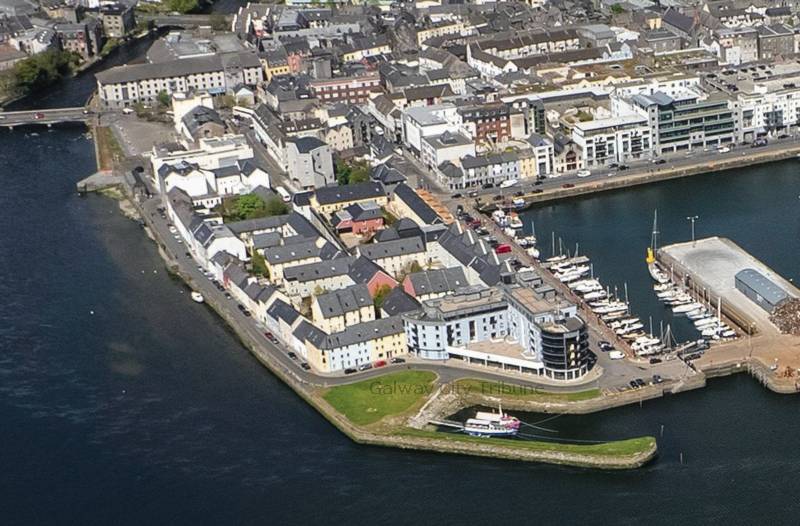
From the Galway City Tribune – An impassioned plea for a ‘masterplan’ that would guide Galway City into the future has been made in the Dáil. Galway West TD Catherine Connolly stated this week that there needed to be an all-inclusive approach with “vision and leadership” in order to build a sustainable city.
Deputy Connolly spoke at length at the crisis surrounding traffic and housing in Galway city and said that not all of the blame could be laid at the door of the local authority.
She said that her preference would be the provision of light rail as the main form of public transport, but that this would have to be driven by the government.
“I sat on the local council for 17 years and despaired at all of the solutions going down one road, metaphorically and literally. In 2005 we put Park & Ride into the development plan, but that has not been rolled out. A 2016 transport strategy was outdated at the time and still has not been updated.
“Due to the housing crisis in the city, a task force was set up in 2019. Not a single report or analysis has been published on the cause of the crisis,” added Deputy Connolly.
She then referred to a report from the Land Development Agency (LDA) that identified lands suitable for the provision of housing. But she said that two-thirds of these had significant problems and a large portion was in Merlin Park University Hospital which, she said, would never have housing built on it.
In response, Minister Simon Harris spoke of the continuing job investment in the city and also in higher education, which is his portfolio.
But turning his attention to traffic congestion, he accepted that there were “real issues” when it came to transport, mobility and accessibility around Galway.
“We share the view that we need a Park & Ride facility and I understand there are also Bus Connects plans.
“I also suggest that the City Council reflect on her comments. I am proud to be in a Government that is providing unparalleled levels of investment to local authorities and unparalleled opportunities for local authorities to draw down,” he said.
Then Minister Harris referred to the controversial Galway City Outer Ring Road which he said was “struck down by An Bord Pleanála”, despite a lot of energy having been put into that project.
However, Deputy Connolly picked up on this and pointed out that An Bord Pleanála did not say ‘No’ to the ring road.
“The High Court said ‘No’ to the ring road because An Bord Pleanála acknowledged it failed utterly to consider climate change and our climate change obligations.
“That tells us something about An Bord Pleanála and the management that submitted such a plan.”
In the end, Minister Harris agreed that there needed to be a masterplan for Galway City.
“I suggest it is for the local authority to come up with a vision and then work with the Government to try to fund and implement that.”
CITY TRIBUNE
Official opening of Galway’s new pedestrian and cycle bridge
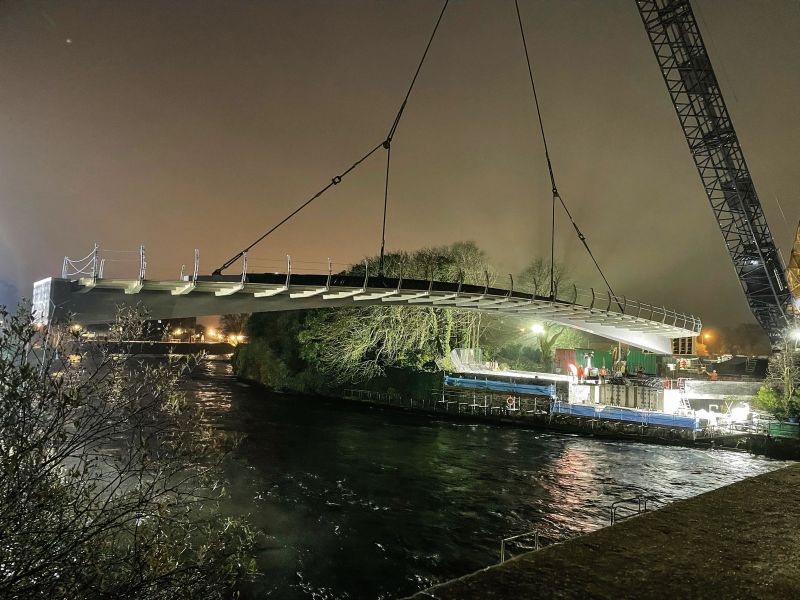
The new Salmon Weir pedestrian and cycle bridge will be officially opened to the public next Friday, May 26.
Work on the €10 million bridge got underway in April 2022, before the main structure was hoisted into place in early December.
A lunchtime tape-cutting ceremony will take place on Friday, as the first pedestrians and cyclists traverse the as-yet-unnamed bridge.
The Chief Executive of Galway City Council, Brendan McGrath, previously said the bridge, once opened, would remove existing conflicts between pedestrians, cyclists and traffic “as well as facilitating the Cross-City Link public transport corridor over the existing 200-year-old bridge”.
The naming of the new bridge has been under discussion by the Council’s Civic Commemorations Committee since late last year.
One name that has been in the mix for some time is that of the first woman in Europe to graduate with an engineering degree – Alice Perry.
Ms Perry, who was from Wellpark, graduated from Queen’s College Galway (now University of Galway) in 1906. The university’s engineering building is named in her honour.
The bridge was built by Jons Civil Engineering firm in County Meath and was assembled off-site before being transported to Galway. Funding for the project was provided in full by the National Transport Authority and the European Regional Development Fund.
(Photo: Sheila Gallagher captured the city’s new pedestrian footbridge being raised on the south side of the Salmon Weir Bridge in December. It will officially open next Friday, May 26).
CITY TRIBUNE
Minister branded ‘a disgrace’ for reversing land rezoning in Galway City

From the Galway City Tribune – Minister of State for Local Government and Planning, Kieran O’Donnell was labelled a “disgrace” for overturning councillors’ decisions to rezone land in the new City Development Plan.
Minister O’Donnell (pictured) confirmed in a letter to Council Chief Executive Brendan McGrath last week that he was reversing 25 material alternations made by councillors to the CDP 2023-29. He made the decision on the advice of Office of Planning Regulator (OPR).
Minister O’Donnell directed that 14 land parcels that were subject to land-use zoning changes by councillors as part of the Material Alterations to the Draft CDP should be reversed.
He directed that a further 11 land parcels in the city should become “unzoned”.
The Minister found that the CDP had not been made in a manner consistent with recommendations of the OPR, which required specific changes to the plan to ensure consistency with the national planning laws and guidelines.
At last week’s Council meeting Cllr Eddie Hoare (FG) asked for clarity on the process by which councillors could rezone the lands that had been changed by the Minister’s direction.
Cllr Declan McDonnell said, “What he [Minister O’Donnell] has done is an absolute disgrace”.
And he asked: “Do we have to have another development plan meeting to deal with it?”
Both Cllrs Hoare and McDonnell wondered what would become of the lands that were rezoned or unzoned by the ministerial direction.
Mr McGrath said the Council had put forward an argument in favour of retaining the material alterations in the plan, but ultimately the Minister sided with OPR.
He said if councillors want to make alterations to the new plan, they could go through the process of making a material alteration but this was lengthy.
The Save Roscam Peninsula campaign welcomed the Minister’s decision.
In a statement to the Galway City Tribune, it said the direction would mean the Roscam village area on the Roscam Peninsula will be unzoned and a number of land parcels would revert back to agriculture/high amenity.
A spokesperson for the campaign said: “the material alterations made by city councillors following lobbying by developers continued the long-standing practice of councillors facilitating a developer-led plan rather than an evidence- and policy-based plan that meets the needs of the city.
“The Minister’s direction is an important step in restoring confidence in the planning system. It is clear from the City Council’s own evidence on future housing projections that there was no requirement to zone these lands for residential purposes in order to meet the needs of the targeted population increase up to 2029,” the spokesperson added.


